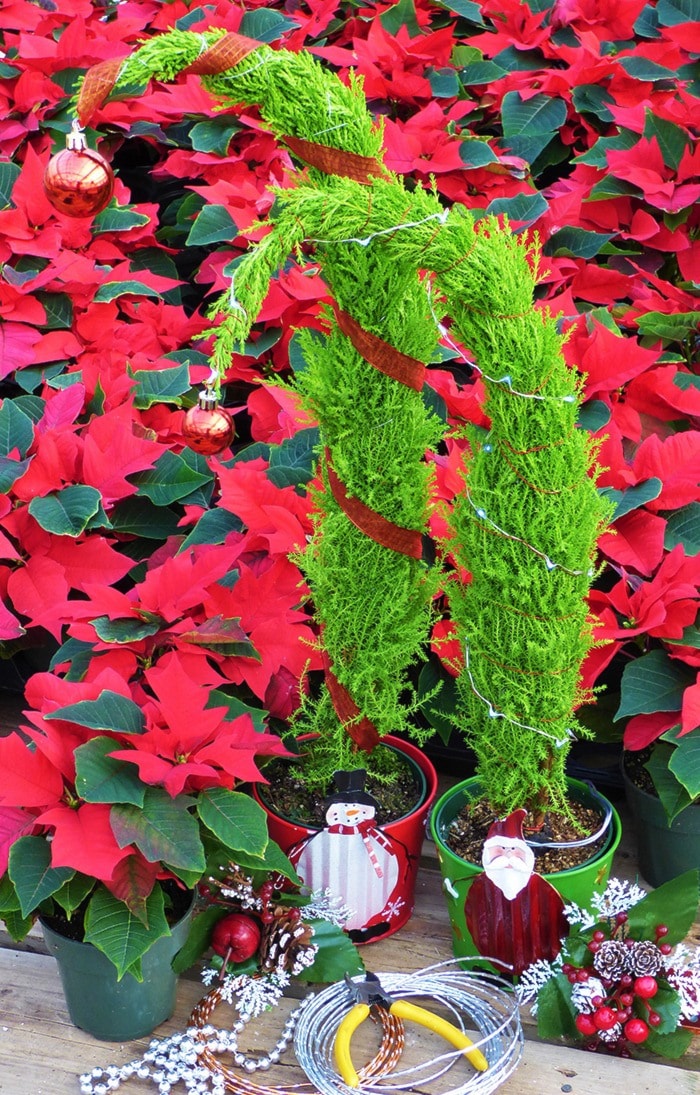I thought I would give you a little insight on the hottest gardening trend this Christmas– making a ‘Who’ tree.
What’s a Who tree, you ask.
Well, I can only say that it was inspired by the twisted, snow-laden conifers that adorn the illustrations of How the Grinch Stole Christmas, by Dr. Seuss, and I suppose that the 1966 animated special had something to do with it, too.
Needless to say, the goal is to create an unnatural looking live tree using a young evergreen, some floral wire, simple decorations and, of course, a little imagination.
The best tree to use is a dwarf Monterey cypress (Cupressus macrocarpa), called ‘Wilma Goldcrest,’ which is a bright chartreuse and smells just like Lemon Pledge when rubbed.
You will want a small plant in a four- to five-foot pot, something around 18 inches tall. Then you will need about six inches (make it eight if you are not handy) of heavy floral wire, preferably something in a festive colour. Some sort of tree topper, such as a light plastic ball or ornament, rounds out the essentials (we will cover decorating later).
This particular tree species was flogged a few years back as the first indoor/outdoor plant and can be kept inside in rooms with bright light. If you decide to keep it in for more than 10 days, then it will have to stay there until May, when you will have the option of planting it outside.
The Who tree transformation starts by making sure the tree is room temperature before starting, as those that come in out of the cold will just crack when you attempt to bend them.
One way to cheat is to choose the skinny, single-stemmed ones, as these are easy to wire and readily bend.
Start by looping one end of the wire and twisting it around the base of the tree, then begin to wind it upwards and around, using one hand to compress the foliage and the other to wire.
You want to wind closer together as you reach the top and, hopefully, you will have a foot of wire left by the time you get there.
Then slide your ball or tree topper onto the wire down to the tip of the tree, bend the wire over and wind the excess back down.
You are now ready to do the twisting, which can be achieved by using both hands to gently arch the top of the tree. With heavier wire, you can even twist it in several directions.
With your Who tree completed, you are now ready to decorate, with the most popular ideas being to wind half-foot ribbon or strings of plastic beads (usually four-inch lengths) around and up the tree. You can choose a heavier ornamental pot to slip it into that also serves as a counterbalance for those really bendy specimens.
Floral picks can poked into the soil at the base of the plants and some people even invest in tiny battery-operated LED Christmas lights.
At the last Who tree seminar we ran, the most popular accent was a little spray snow applied to the tip of the tree and the topper.
Those six seminars we ran over two weekends taught me that the whole purpose of being there wasn’t to actually make the tree, but to create happy memories. There were mothers and fathers, grandparents, uncles and aunts, contented siblings and children (even Dave, our resident hummingbird showed up), all smiling and remembering what Christmas is really about – friends, family and maybe even a little joy.
– Mike Lascelle is a local nursery manager and gardening author (hebe_acer@hotmail.com).
